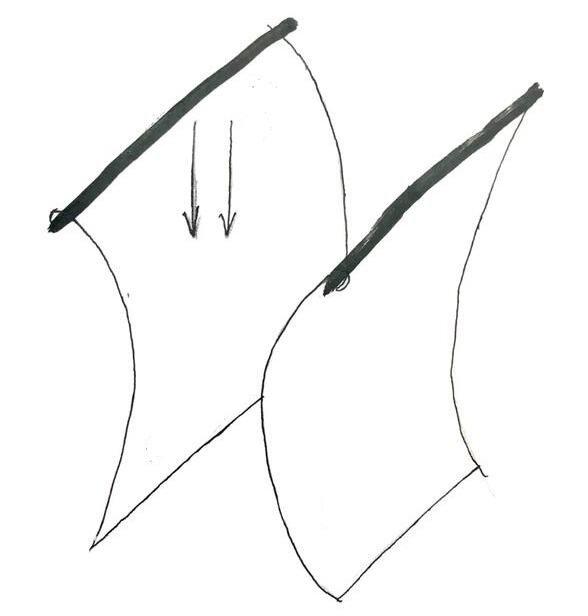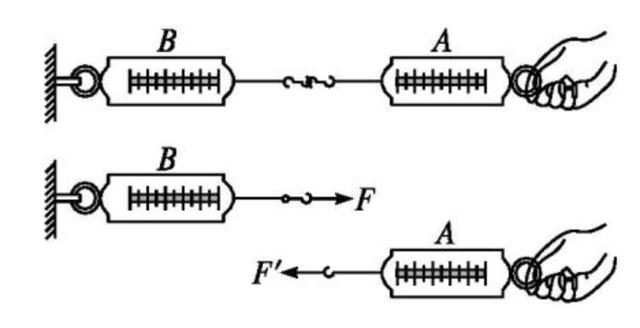From 100 years ago to today, "Why the plane can fly" is still an unsolved mystery!
The loopholes in the two classic theories
It is well known that airplanes fly because of lift, but how is lift generated? There are two theories that can explain the generation of lift, but they both have some loopholes.
▌The loopholes in Bernoulli's principle
We all did an experiment in the junior high school physics class: put two pieces of paper near your mouth and blow into the middle of the two pieces of paper. The two pieces of paper will not separate, but will move closer.
This experiment allowed us to understand a theory "Bernoulli's Principle", which states that the pressure of a fluid will decrease as the speed increases, and vice versa .

This is a principle proposed by the Swiss mathematician Daniel Bernoulli in the monograph "Fluid Dynamics" published in 1738. This principle has also become the current non-technical theory explaining "why an airplane can fly" .
(Image source: Weibo @tyzlolicon)
However, Bernoulli's principle itself cannot fully explain lift. It has three loopholes:
First, although actual experience shows that the air flows faster on curved surfaces, Bernoulli's principle cannot explain why the flow rate becomes faster . In other words, this theorem does not explain how the high velocity above the wing is generated.
Second, when the wing moves upward, the air should be compressed, and the pressure on the top of the wing should increase, but Bernoulli’s principle does not explain why the high-speed air above the wing forms a lower pressure , rather than a higher pressure . pressure.
Because in daily life, such as on highways, when multiple lanes are combined into one lane, traffic deceleration or even traffic jams are prone to occur; why changing the car to air molecules will produce the opposite effect? Bernoulli's principle does not explain this problem.
Third, like many flying demonstrations, there are many flying tumbling movements. At this time, the wing is downward. According to Bernoulli's principle, the flow velocity under the aircraft will become faster and a downward force will be obtained . It will fly directly down without continuous climbing .
The Bernoulli principle cannot give a reasonable explanation for these three issues, so it cannot be a complete theory that can explain lift at the technical level.
▌Newton's third law also has loopholes
In addition to using Bernoulli's theory to explain lift, scientists are also trying to use another theory to explain the source of this force: Newton's third law (the principle of force and reaction).
Newton's third law defines that the force and reaction force between two interacting objects are always equal in magnitude, opposite in direction, and acting on the same straight line.

When applied to an airplane, when the wing pushes the air down, the mass of air will produce an upward thrust of equal magnitude and opposite direction, that is, lift. Therefore, the theory is that the wing generates lift (reaction force) by pushing air (force).
At the same time, this theory has more applications than Bernoulli's principle. For example, an airplane that cannot be explained by Bernoulli's principle can also be explained by it.
The loophole of Newton's third law is that it cannot explain the low pressure area mentioned in the Bernoulli principle on the top of the wing . However, as long as the aircraft is flying, the low-pressure zone is a factor that aerodynamics cannot ignore.
After Einstein briefly set foot in aviation, he said it was "stupid"
Newton’s third law was put forward in 1687, Bernoulli’s principle was put forward in 1726, and the first plane of the Wright brothers took off in 1903. After the successful take-off, people applied these two theories in order to explain aerodynamics. "Why the plane can fly".
After nearly two centuries, Newton and Bernoulli would never have thought that their theories could be applied to aviation.
After that, many scientists "bought the waist" for this unsolved mystery, such as Einstein .
In 1916, Einstein gave an explanation based on the incompressible and frictionless fluid (that is, the ideal fluid hypothesis). At the same time, he proposed a principle very similar to Bernoulli: fluid pressure is greater where the speed is slower, and vice versa .
Using this principle, Einstein proposed a design with a slight bulge on the top of the wing . He believed that such a shape could increase the air velocity at the bulge, thereby reducing the pressure there, creating a pressure difference, and making the aircraft fly.
In 1917, on the basis of theory, Einstein designed a wing that resembles a cat's stretched posture, which is vividly called a cat's back wing. Later, he brought the design plan to Berlin-based aircraft manufacturer LVG, which built a new aircraft around the design plan.
(Image source: Weibo @tyzlolicon)
But the test pilot reported that the plane was wobbly in the air, like "a pregnant duck." Einstein thought of fluids in the real world too idealistically. In 1954, Einstein stated that his short-term involvement in the aviation industry was more like a "stupid behavior of young people . "
Can contemporary scientists explain this problem?
In fact, the scientific method of designing airplanes nowadays is to use computational fluid dynamics simulation, and the calculation fully takes into account the actual viscosity equation of real air. The results obtained by the simulation together with the solution of the above equation can predict the pressure distribution pattern, and give the air flow pattern and quantitative results.
Although the field of aircraft design is very advanced today, they themselves do not make a physical and qualitative explanation of lift. For example, neither Bernoulli's principle nor Newton's third law can explain the low pressure area on the wing and the fast air velocity on the wing. Can scientists now explain it?
Mark Dreira is a professor of fluid dynamics at the Massachusetts Institute of Technology. He gave an answer. It probably means: if these air fluid clusters on the wing instantly deviate from the upper surface of the wing, it will be between it and the wing. The space will form a vacuum, this part of the vacuum will suck down the fluid mass along the curve of the airfoil until the vacuum is basically filled. This reciprocation caused a low pressure on the upper surface of the wing.
This also explains why the air flow rate will soon be top of the wing: when the airflow over the wing near the wing, the wing surface of the low-pressure air mass will "pull" the air flow in the horizontal direction , so when these air When it reaches the wing, the speed will be faster.
But as always, different experts will give different answers when explaining lift.
Babinski, an aerodynamicist at the University of Cambridge, said: "If the appearance of vacuum is the cause of lift, it is difficult to explain why sometimes the airflow does not flow over the surface of the wing . Of course, he is correct in other respects. There may not really be a quick and easy explanation for this problem."
Dreira also replied to this idea, admitting that his theory was still flawed .
Yes, in fact, these theories are not wrong. To perfectly explain the lift in aerodynamics, you need to consider all the forces, influencing factors, and physical conditions during the lift of the aircraft, without leaving unexplained or unknown problems. This seems unlikely.




 Account not verified
Account not verified